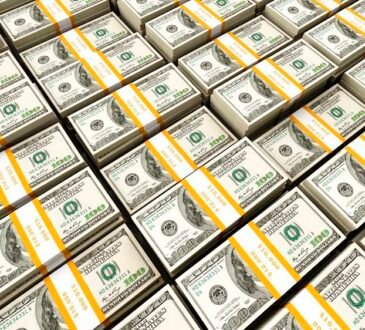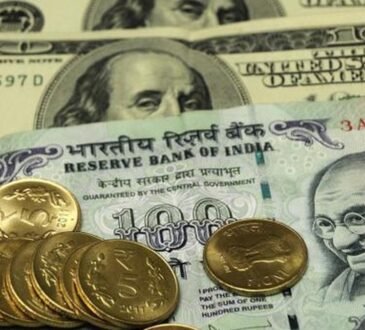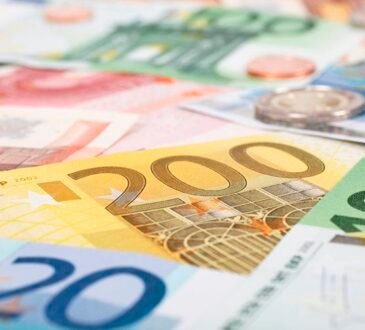- Gold rises in risk-on setting, shrugging off robust US data as the US Dollar hits a 12-month low.
- Powell’s dovish remarks keep US Treasury yields stable, pressuring the US Dollar and boosting Gold.
- Focus shifts to upcoming core PCE and job data, crucial for Fed decisions; rate cut prospects bolster Gold.
Gold prices advanced firmly during the North American session on Tuesday amid a risk-on environment and steady US Treasury yields. Investors ignored better-than-expected economic data from the United States (US), failing to underpin the already battered Greenback. The XAU/USD trades at $2,524 and gains over 0.20%.
The financial markets’ narrative has remained unchanged since Federal Reserve (Fed) Chair Jerome Powell announced last Friday that the time for lowering interest rates has come. This sent US Treasury bond yields tumbling and the US Dollar to a new 12-month low, levels last seen in July 2023, according to the US Dollar Index (DXY).
The DXY sits at 100.55 and slumps 0.31%, while the US 10-year benchmark note yields 3.829%, virtually unchanged.
American Consumers turned slightly optimistic in August, according to a poll by the US Conference Board (CB). However, traders remain laser-focused on Friday’s release of the core Personal Consumption Expenditures Price Index (PCE), the Fed’s preferred gauge for inflation, along with jobs market data with the Initial Jobless Claims report announced on August 29.
This could be a prelude to the upcoming Nonfarm Payrolls report due to the Fed’s pivot toward worrying about the labor market. The jobs market remains healthy if the number of Americans filing for unemployment claims is lower than estimates. Otherwise, the US Dollar could weaken further, creating a tailwind for Gold prices.
The December 2024 Chicago Board of Trade (CBOT) fed funds future rates contract hints that investors are eyeing 100 basis points of Fed easing this year, up from Monday’s 97. This implies that traders estimate a 50 bps interest rate cut at September’s meeting, though odds for lowering rates of that size lie at 34.5%, according to the CME FedWatch Tool.
Bullion prices received a lifeline from rising tensions in the Middle East. The Israel-Hezbollah conflict escalated over the weekend, and fears that the conflict could broaden would be positive for the golden metal.
Daily digest market movers: Gold price climbs, ignoring Consumer Confidence data
- If US economic data continues to be weak, the Gold price uptrend is likely to persist, fueling speculation about a larger rate cut by the Fed.
- US Conference Board revealed that Consumer Confidence for August came at 103.3, up from July’s upwardly revised 101.9 and exceeded estimates of 100.7.
- Gross Domestic Product (GDP) figures for Q2 in the second estimate are expected to improve from 1.4% to 2.8%.
- On Friday, the Fed’s favorite inflation gauge, the core Personal Consumption Expenditures (PCE) Price Index, will be revealed. It is expected to rise from 2.6% to 2.7% YoY.
Technical outlook: Gold’s uptrend is intact as buyers eye $2,550
Gold price’s upward bias remains, though price action during the last couple of days shows that traders are reluctant to position themselves ahead of the PCE data release.
From a momentum standpoint, the Relative Strength Index (RSI) is failing to crack its last peak, contrarily to XAU/USD price action, meaning that a negative divergence could be looming.
If XAU/USD slides below the current week’s low of $2,503 and $2,500, this would pave the way for a deeper pullback. The following support would be the July 17 high at $2,483, followed by the $2,450 psychological mark. Further downside is seen at the 50-day Simple Moving Average (SMA) at $2,410, ahead of $2,400.
On the flip side, if bullion prices clear the all-time high (ATH) of $2,531, this could sponsor a leg-up to $2,550 before challenging $2,600.
Fed FAQs
Monetary policy in the US is shaped by the Federal Reserve (Fed). The Fed has two mandates: to achieve price stability and foster full employment. Its primary tool to achieve these goals is by adjusting interest rates. When prices are rising too quickly and inflation is above the Fed’s 2% target, it raises interest rates, increasing borrowing costs throughout the economy. This results in a stronger US Dollar (USD) as it makes the US a more attractive place for international investors to park their money. When inflation falls below 2% or the Unemployment Rate is too high, the Fed may lower interest rates to encourage borrowing, which weighs on the Greenback.
The Federal Reserve (Fed) holds eight policy meetings a year, where the Federal Open Market Committee (FOMC) assesses economic conditions and makes monetary policy decisions. The FOMC is attended by twelve Fed officials – the seven members of the Board of Governors, the president of the Federal Reserve Bank of New York, and four of the remaining eleven regional Reserve Bank presidents, who serve one-year terms on a rotating basis.
In extreme situations, the Federal Reserve may resort to a policy named Quantitative Easing (QE). QE is the process by which the Fed substantially increases the flow of credit in a stuck financial system. It is a non-standard policy measure used during crises or when inflation is extremely low. It was the Fed’s weapon of choice during the Great Financial Crisis in 2008. It involves the Fed printing more Dollars and using them to buy high grade bonds from financial institutions. QE usually weakens the US Dollar.
Quantitative tightening (QT) is the reverse process of QE, whereby the Federal Reserve stops buying bonds from financial institutions and does not reinvest the principal from the bonds it holds maturing, to purchase new bonds. It is usually positive for the value of the US Dollar.






